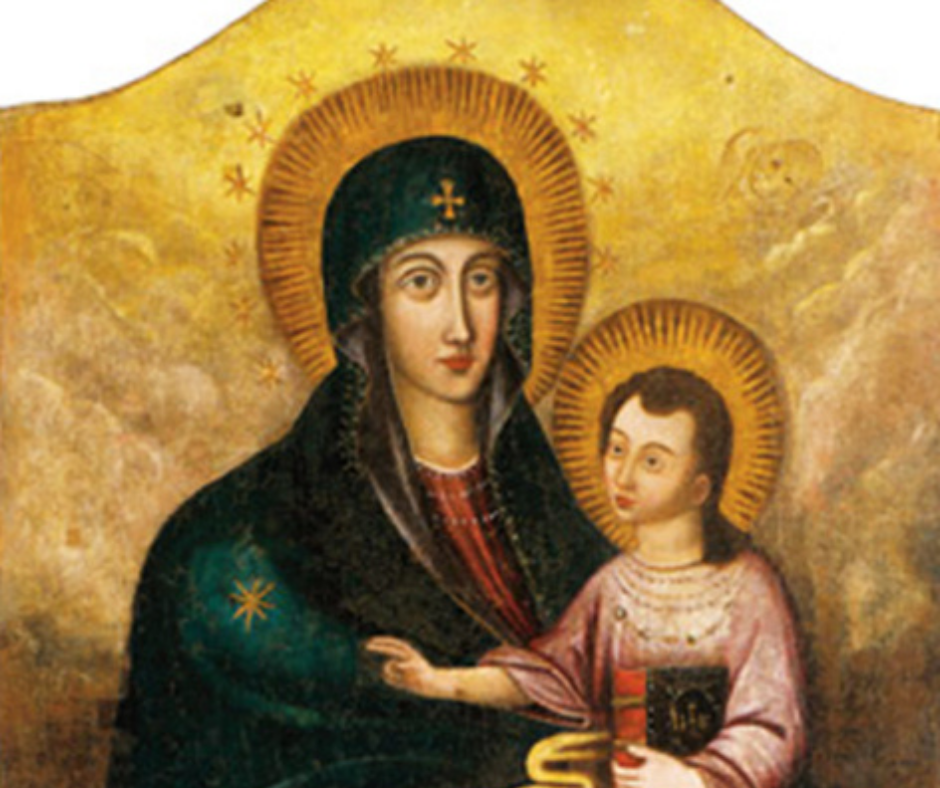OUR LADY OF SILUVA, Siluva, Lithuania (1608): THE land was very sandy and barren in this region, making it difficult for the poor farmers to provide for their families who were staunchly Catholic and especially devoted to the Blessed Mother. The Catholic religion prevailed until the Protestant Reformation in the mid-sixteenth century swept through Europe. Lutheranism, then flourished and Calvinism soon followed. Not even the little village of Siluva was spared. In 1532, the Calvinist influence was so great that the governor of the little village converted to it, as did the nobility and intellectuals throughout the country. A result of this Calvinist influence was the suppression of the Faith and the confiscation of Church property. Schools were given to Calvinist propaganda, while religious gatherings were prohibited. The poor people have not only endured the hardships inflicted on them under the Calvinists, but were also suffering the loss of their churches.
When the Siluva church was about to be closed, the parish priest, Fr. John Holubka, obtained an ironclad box and placed in it, liturgical vestments, chalices, and documents which proved that the property had been given to the church by Vytautas the Great. The most carefully placed item was a painting of the Blessed Virgin holding the Child Jesus that had been given to the church in 1457, and had been prominently positioned above the main altar. The box was sealed and buried deep in the ground near a large rock. The priest’s actions seemed inspired because a short time later, the authorities seized the church for their Calvinist activities. Eighty years went by with only the elderly being true to the Faith. But then the Blessed Mother intervened.
THE FIRST APPARITION AT SILUVA: It was summertime in the year 1608, while children were tending their flocks in a field on the outskirts of the village. They were gleefully playing and singing songs when they suddenly stopped, and beheld a beautiful young woman standing on a large rock, holding a beautiful baby in her arms. The children’s happiness soon turned to deep sadness when they saw the woman weeping bitterly. The apparition did not speak, but looked heartbroken, with tears running down her cheeks and splashing on the rock. The children described the apparition as glowing with light. She was dressed in flowing blue and white robes, with her long, light-brown hair falling softly over her shoulders. In a few moments the vision ended. One of the boys ran to tell the Calvinist catechist who ridiculed him and sent him back to the fields to tend the flocks. The other children ran home and told their parents and neighbors about the weeping, heartbroken woman. The sincerity of the children prompted the people to gather at the rock the next morning. Some scoffed, but others fully anticipated a return of the vision.
THE SECOND APPARITION: The Calvinist pastor, aware of the crowd gathering at the place, became alarmed at the gullibility of his people who believed this “Roman superstition.” After warning them of this “work of Satan” he was about to leave when he heard the heartrending sound of weeping. Frightened at first, he regained his composure and asked the apparition, “Why are you weeping?” The Blessed Mother replied, “There was a time when my beloved Son was worshipped by my people on this very spot. But now they have given this sacred soil over to the plowman and the tiller and to the grazing animals.” Without another word she vanished. The people quickly regained the Faith so that a decade later, on the Feast of the Nativity of the Blessed Virgin Mary, more than 11,000 people received Holy Communion during a Mass offered at the scene of the apparitions. The report of the visions gradually reached a very elderly, blind man who remembered that the church treasures had been stored in the ground beside a large rock in a field. He was brought to the place he described and was immediately cured of his blindness when he indicated the exact place of the treasure. This miracle had a profound effect on the people. The chest was dug out of the ground and opened. Everything inside was found perfectly preserved. Having obtained the deeds to the property, the bishop, M. Valancius, petitioned the court for the return of the church and its property. In the year 1622, the Tribunal of Vilnius decided in favor of the Catholics.
Through the years, the church was repeatedly replaced by larger ones to accommodate the people who thronged to venerate the painting of Mother and Child. Now crowned and clad in gold, it is enshrined permanently in the Basilica of the Birth of the Blessed Virgin Mary. The rock on which the Blessed Mother stood is found in the “Chapel of the Appearance.” It is by the altar where it is accessible to the people, who are permitted to kiss and touch it. Due to the many favors and miraculous healings received from Our Lady of Siluva, the happenings were extensively investigated by the bishops of the country. The results of their study prompted Pope Pius VI to authenticate the apparitions by a papal decree dated August 17, 1775. It was again authenticated when Pope John Paul II visited Siluva in 1993, and prayed in the Chapel of the Appearance. Finally, Pope Benedict XVI named the Archbishop of Cologne, Germany, to be his special envoy at the 400th anniversary of the apparitions and announced the appointment of Cardinal Joachim Meisner as celebrant for the occasion. With all these endorsements, Siluva is now regarded as Lithuania’s most important Marian shrine.

















